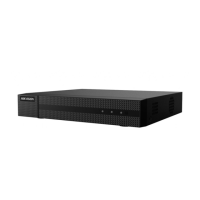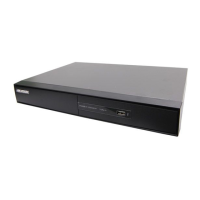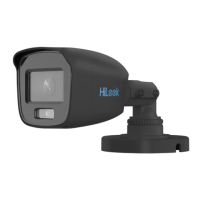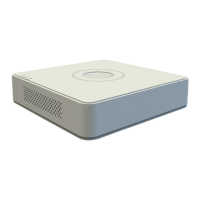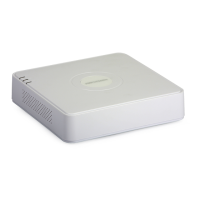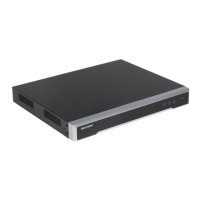Digital Video Recorder User Manual
70
When the connected IP camera does not support H.265, only H.264 can be seleted for the main stream
(continuous).
Step 3 Check the checkbox of Enable H.264+ or Enable H.265+ to enable this function. Enabling
it helps to ensure the high video quality with a lowered bitrate.
For HWD-7108MH-G2 and HWD-7216MH-G2 series DVR, if the video encoding is H.264
or H.265, when 8 MP signal input is connected, H.264+ or H.265+ is disabled. If the video
encoding is H.264+ or H.265+, when 8 MP signal input is connected, the video encoding will
change to H.264 or H.265 automatically, and H.264+ or H.265+ is disabled. Event if you
check Enable H.264+ or Enable H.265+ when 8 MP signal input is connected, the device
will still encode with H.264 or H.265.
After enabling H.264+ or H.265+, the Bitrate Type, Video Quality, Max. Bitrate Mode,
Max. Bitrate(Kbps) and Max. Bitrate Range Recommend are not configurable.
If H.265+ is enabled, line crossing detection and region entrance detection are not supported.
For the connnected IP camera, the H.264+ or H.265+ should be supported by the camera and
added to the DVR with the HIKVISION protocol.
You should reboot the device to activate the new settings after enabling the H.264+ or H.265+.
Step 4 Click More Settings to configure more parameters.
Figure 5-5 More Settings of Record Parameters
Pre-record: The time you set to record before the scheduled time or event. For example, when an
alarm triggered the recording at 10:00, if you set the pre-record time as 5 seconds, the camera
records it at 9:59:55.
Post-record: The time you set to record after the event or the scheduled time. For example, when
an alarm triggered the recording ends at 11:00, if you set the post-record time as 5 seconds, it
records till 11:00:05.
Expired Time: The time for keeping the record files in the HDDs, once exceeded, the files will be
deleted. The files will be saved permanently if the value is set as 0. The actual keeping time for the
files should be determined by the capacity of the HDDs.
Redundant Record: Enabling redundant record means you save the record in the redundant HDD.
See Chapter 5.8 Configuring Redundant Recording.

